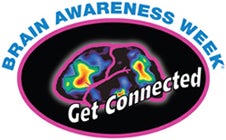Brain Expo Stations
Seeing is Believing
Seeing is believing right? Well not always. Visual tricks and optical illusions at this station will teach students to be aware that their eyes do not always act as a true window to the world. Students will learn about their blind spots, how they see movement and judge size at this station.
Brain Waves
Ever wonder what your brain waves look like, or if you even have any? Here is your chance to find out. A volunteer at this station will be hooked up to a EEG and they will be able to see their brain’s activity. Students will learn what the different types of brain waves reveal about your state of mind.
Insect Robots with Brains
Robots that look and act like people or animals have been part of science fiction for decades. Scientists and engineers have begun to build robots based upon studies of insects. The robots can walk on legs and climb over obstacles. The computer ‘brains’ of the insect robots can make decisions very much like a real animal. At this station, students will learn about some of the amazing new ideas that are making science fiction real.
Brain Foods
What is brain food? It’s food that helps you have a healthy brain. At this station students will participate in an activity that teaches them how to tell the difference between food that is good for their brain, and food that is not.
Eyes are AmaSEEing
Did you know that you have rods and cones in your eyes? Do you know why you have two eyes? Both of these questions will be answered at this station where you will learn how visual acuity and accuracy of movement are assisted by your amazing visual system.
Neurons
Have you ever wondered what nerves look like and how they help us think and sense the world around us? At this station students will learn about the structure of neurons, and the different types found throughout the human body.
Are you paying attention?
Are you easily distracted or is it easy for you to focus your attention on one thing at a time? At this station students will learn about attention and how focusing on one thing can cause them to miss another thing happening right in front of their eyes.
Color Your Own Brain Hat
Do you know what your brain looks like and what the major parts are called? At this station students will make a brain hat to help them learn the parts of the brain and where they are located.
Touch a Brain
Have you ever wondered what it would be like to touch a brain? At this station students get the chance to touch, hold and see a real sheep’s brain up close.
Bugs Have Brains Too
Did you know that bugs have brains, too? Though they are small, bugs need brains in order to survive and thrive, just like people. Students will learn about the differences between human and insect brains and nervous systems, and have fun touching some bugs.
Sensory Integration
Can you name all five senses? Our senses provide information about the world around us. Activities at this station will get students thinking about how our senses work together to help us go about our daily lives (e.g. eating, walking, petting animals).
Eating Pizza
How many parts of the brain does it take to eat a pizza? At this station students will learn about all the parts of the brain involved in the seemingly simple task of eating a pizza.
Aping Your Behavior
Do you know the difference between a human brain and an ape’s brain? There actually aren’t a whole lot. At this station students will learn what the major differences are and how they translate into the difference in our abilities.
Mirror Drawing
Students will face the challenge of mirror drawing or drawing an image while looking in a mirror. The ability to overcome the motor memory and draw a simple image can be quite challenging.
Stay Active to Stay Healthy
Did you know that exercise is good for your brain? It does so by increasing blood flow, fights the effects of stress, and much more. At this station students will learn ways to exercise their body and brain to keep both healthy.
Cerebellum
Do you know what a cerebellum is or what it does? At this station students will learn about the part of the brain called the cerebellum. This is an important part of the brain and it plays a role in our ability to balance and move.
Amazing Memory
How many types of memory are there? Learn about background, short and long term memory and challenge your memory during fun activities at this station.
How fast are you?
What do you know about reflexes? They are pretty qick. How fast are yours? Find out in a series of activities that allow you to measure your reaction time for catching a dropped object.
Lose Your Own Hand
Is it possible to lose your own hand? The activity at this station will show you that it is. By giving students a substitute arm and blocking their view of their real arm, they will experience what it is like to lose their hand.
Brain and Spinal Cord Safety
What happens to your brain when you are in a car accident or hit your head hard while playing a game like football? At this station students will learn about the importance of protecting their brains from injury in extreme and everyday situations.
Sleep
How much time do you spend sleeping? What happens while you are asleep? At this stations students will learn about the sleep cycle, what type of sleep is necessary to feel rested, and how much sleep they should be getting every night.

